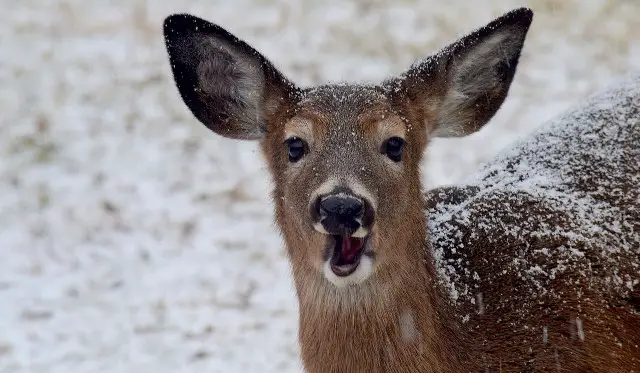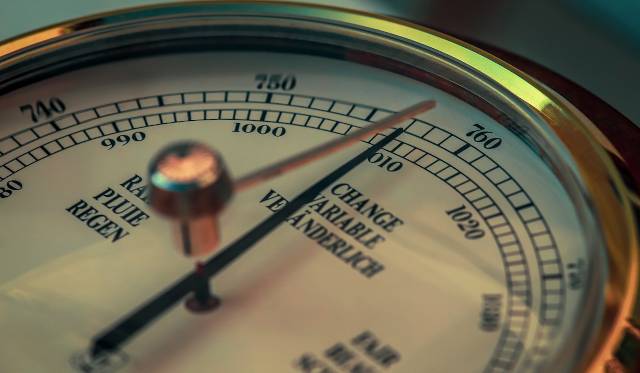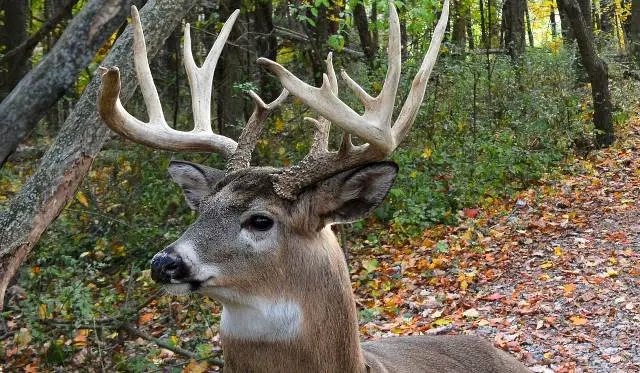Hunting deer can be a challenging but rewarding experience, but it requires knowledge and preparation. One key consideration when planning your hunt is barometric pressure.. By monitoring changes in air pressure and knowing the best barometric pressure for deer hunting, you can improve your chances of bringing home venison.

Contents
- Understanding Barometric Pressure
- Effects of Barometric Pressure on Deer Movement
- Ideal Barometric Pressure Range for Deer Hunting
- Deer Hunting Strategies in Varying Barometric Pressure
- Best Barometric Pressure for Deer Hunting: FAQs
- How does barometric pressure influence deer movement?
- What is the ideal barometric pressure range for deer hunting?
- Does steady or changing barometric pressure have a greater effect on deer activity?
- Do deer prefer high or low barometric pressure conditions?
- How do different weather conditions and barometric pressure impact deer behavior?
- How can I track barometric pressure changes for a successful hunt?
Understanding Barometric Pressure
Barometric pressure indicates the weight of the air in the atmosphere. When you’re hunting for deer, it’s important to consider the effects of barometric pressure on overall whitetail activity. What is barometric pressure and how does high-pressure and low-pressure systems impact deer behavior?
High-Pressure System
In a high-pressure system, the air pressure is greater than the surrounding areas, which often results in clear skies and calm weather. Higher atmospheric pressure is usually associated with north winds, which is one reason why hunters often find success when winds are coming from the northeast to northwest.
Low-Pressure System
A low-pressure system is characterized by a drop in atmospheric pressure, often leading to increased cloudiness, humidity, and precipitation. Deer are sensitive to changes in barometric pressure and tend to become less active as a storm approaches.
Effects of Barometric Pressure on Deer Movement
Keep in mind that scientific research has not confirmed a consistent impact of barometric pressure and deer movements. The effects of pressure on deer activity may vary depending on additional factors such as location, hunting pressure during deer season, and food sources. The information provided is meant to give you a general understanding of how barometric pressure might affect your deer hunting experience.
Deer Activity and Pressure Rises
Deer, particularly whitetails, are sensitive to weather changes, and that can impact their activity levels. Rising pressure often indicates stable and favorable weather conditions, which can lead to increased whitetail movement.
During periods of high pressure, usually above 30.00 inches, deer are more likely to be on the move. Mature bucks, in particular, tend to be more active when the pressure is between 30.00 and 30.40 inches, based on data and studies shared by outdoorlife.com.
Deer Behavior During Low and High-Pressure Systems
Low-Pressure Systems: Low barometric pressure is associated with dense air and often brings about unfavorable weather conditions, such as rain and storms. During these times, activity tends to slow down.
Whitetails may seek shelter and conserve energy rather than being active and exposing themselves to the elements. However, hunting just before a storm (when the barometric pressure is low) can be an excellent time to find deer, as they might be feeding or bedding down in anticipation of the incoming weather.
High-Pressure Systems: high barometric pressure indicates less dense air and typically comes with clear skies and calm winds. These conditions can promote increased activity and deer may venture further from their bedding and feeding areas.
As a hunter, refine your tactics and expectations accordingly during high and low-pressure events.

Ideal Barometric Pressure Range for Deer Hunting
Deer tend to be most active when the barometric pressure is between 29.80 and 30.29 inches.
When you see the pressure in this range, either decreasing or increasing, it’s a sign that deer feeding likely will be at its peak. Take advantage of these prime conditions.
Also keep in mind the temperature. Deer are more comfortable and active in colder temperatures. So, when you see a combination of ideal barometric pressure and suitable temperature, it’s likely that you’re in for a successful hunt.
Deer Hunting Strategies in Varying Barometric Pressure
Adjusting your hunting plans based on barometric pressure and weather patterns can make a significant difference in your success.
Wind and Its Effects
Wind direction and wind speed can play a major role in deer movement and their ability to detect your presence. Strong winds might make them more cautious and deer tend to stay bedded down in windy conditions. A light breeze can actually help carry your scent away from their sensitive noses.
TIP: Remember, always try to hunt downwind of your target. Adjust your hunting position according to the wind speed and direction. Consider hunting in more sheltered areas if the wind picks up.
Weather Fronts and Deer Hunting
Weather fronts have a significant impact on the activity of deer. Just before a storm or a cold front, deer tend to be more active in search of food. During this time, the barometric pressure is often low, which can enhance deer movement. After the front has passed, whitetail deer activity may decrease as they feel secure and comfortable in their bedding areas.
TIP: As weather fronts approach and pass they often bring pressure changes in the atmosphere. Plan your hunts around weather events.
Humidity and Deer Senses
Humidity levels can influence a deer’s senses, especially their sense of smell. High humidity levels can help disperse your scent, making it less detectable to deer. Low humidity levels can result in your scent being more concentrated and easily detected by deer.
TIP: Regularly check the pressure readings in your hunting area using a weather app or website. Take steps to minimize your scent, such as using scent elimination products or clothing.

Best Barometric Pressure for Deer Hunting: FAQs
How does barometric pressure influence deer movement?
Barometric pressure plays a role in deer movement, but its impact is not very consistent and challenging to prove with scientific evidence. Deer may respond to changes in pressure, but this response is variable especially when considering other factors such as temperature, cloud cover, precipitation, food availability, and area pressure.
What is the ideal barometric pressure range for deer hunting?
The ideal barometric pressure range for deer hunting is near the range of 29.80 and 30.29 inches. Some hunters believe that deer are more likely to move around during periods of slightly rising or dropping pressure.
Does steady or changing barometric pressure have a greater effect on deer activity?
Slightly changing pressure (either rising or falling) might encourage deer to be more active. This theory is based on the belief that deer may sense changes in pressure and move in anticipation of weather events.
Do deer prefer high or low barometric pressure conditions?
Deer do not seem to have a clear preference for high or low barometric pressure conditions. Their habits might slightly change however in response to fluctuations in atmosphere pressure.
How do different weather conditions and barometric pressure impact deer behavior?
Deer are highly adaptable creatures, and their behaviors will vary depending on the specific circumstances. Several weather factors, including temperature, precipitation, wind, and barometric pressure can potentially impact deer behavior.
How can I track barometric pressure changes for a successful hunt?
To track barometric pressure changes, you can use a weather app, website, or a portable barometer specifically made to fit in your pocket. These tools will provide a barometric pressure indicator and help you monitor any changes that might affect deer movement.
